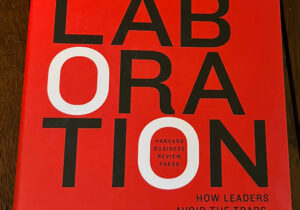Not that Kind of Doctor: Tales of a PhD in a Clinical Department
As long as I have been in science, my research has always been a mix of basic science and translational studies, nestled in a clinical department. This convergence of PhD-initiated basic science questions in a clinical setting has led to some fantastic collaborations and deep introspection about how we define ourselves as scientists and how we find our departmental fit. Views are my own, based on my experiences (n=me).
 The perks: Working in a clinical department has many advantages. You are closer to the patients and the clinicians who treat them. This gives you access to expertise, tissues, and clinical data normally outside your reach. These patient interactions can translate into philanthropy for the department, which can fund small pilot projects, conference travel, and even new equipment. Clinical colleagues have herds of motivated medical students looking for small research projects that, if you are clever, you can dovetail into some of your own research. Your clinical colleagues also have a different skill set that you can leverage against a common problem of interest. In addition to the intellectual input your clinical colleagues provide, this can also include assistance with difficult small animal surgeries, pathology scoring, or institutional review board (IRB) preparation. For me, the most significant part of my clinical department appointment is that it keeps the disease research at the forefront of my mind. Even if the project is asking a very basic question, I am always thinking about what it could mean for understanding, detecting, or treating my Terrible Disease of Interest.
The perks: Working in a clinical department has many advantages. You are closer to the patients and the clinicians who treat them. This gives you access to expertise, tissues, and clinical data normally outside your reach. These patient interactions can translate into philanthropy for the department, which can fund small pilot projects, conference travel, and even new equipment. Clinical colleagues have herds of motivated medical students looking for small research projects that, if you are clever, you can dovetail into some of your own research. Your clinical colleagues also have a different skill set that you can leverage against a common problem of interest. In addition to the intellectual input your clinical colleagues provide, this can also include assistance with difficult small animal surgeries, pathology scoring, or institutional review board (IRB) preparation. For me, the most significant part of my clinical department appointment is that it keeps the disease research at the forefront of my mind. Even if the project is asking a very basic question, I am always thinking about what it could mean for understanding, detecting, or treating my Terrible Disease of Interest.
The challenges: There are, of course, challenges with working in a clinical department. Here are the challenges I have seen, and how I started to deal with them.
Patients come first: Patients will always come first, and they should. This means meetings get pushed back, happen at odd times, or get outright cancelled. I have accepted that larger meetings and conferences happen very early in the morning or late in the afternoon to accommodate more clinicians. For smaller meetings, for example with my Chair, I work closely with the administrative assistants to schedule meetings on lower volume clinic or administrative days. This does not always work out, but it increases the odds I will actually have my meeting.
Busy clinicians: My clinical colleagues wear many hats. Aside from their considerable clinical duties, they mentor residents and fellows, lead NIH panels, develop clinical guidelines, serve on study section, and some even run their own research programs. I have become more appreciative of the time they commit to research, and learned to accept that their time is structured differently than mine, especially if their protected time is limited. My first step in every collaboration is determining how much time they are able and/or willing to contribute. Is it a quick coffee chat about treatment strategies as a consultant? A plan for providing access to their database as a co-investigator? Or are they going to start attending our lab meetings and we will put in a grant together as collaborators?
Different lives: While there are a number of really talented physician-scientists who live both PhD and MD life, most clinical departments are staffed by MDs concerned with clinical practice and PhDs concerned with lab life. My clinical colleagues are concerned with their patients, their case load, residents, and publications/abstracts. Some do health services research. On the flip side, my PhD colleagues are worried about teaching, tenure, grants, and publications. Neither life is easy, even if it looks like it sometimes. It is best to accept that we have different concerns, not dwell on the details, and support each other as colleagues.
Small number of basic scientists: Clinical departments tend to have a smaller basic science contingent. This sometimes leads to seminars and retreats focused more on clinical agendas, rather than research. My solution for this has been to become a secondary faculty member in a basic science department. I identified a larger department that had a weekly seminar, an annual retreat, and a good amount of graduate students and postdocs. Joining this department has provided a much needed basic science department feel, where a good mechanism, even if it does not translate into the clinic, is appreciated. Moreover, this secondary department provides access to graduate students and a social home for postdocs. It has also exposed me to academic faculty life with committees, faculty meetings, and teaching opportunities. The most important part of my secondary appointment, however, is that I do not have an agenda for the department. I am not competing for space, resources, or tenure lines relative to my research interests. Instead, I enjoy departmental life, with a little bit of department service as a price.
In summary, the things that make being in a clinical department so valuable, can also make being a basic scientist in said clinical department a challenge. But it is worth it. Now, excuse mw while I get ready for this 7am meeting. Stay tuned for more tales!
Did I miss an important point? Do you have questions or concerns about the post? Or perhaps an anecdote to contribute! Feel free to send some electrons my way in the comments, via Twitter @PipetteProtag, or through traditional electronic mail pipette.protagonist@gmail.com






0 Comments